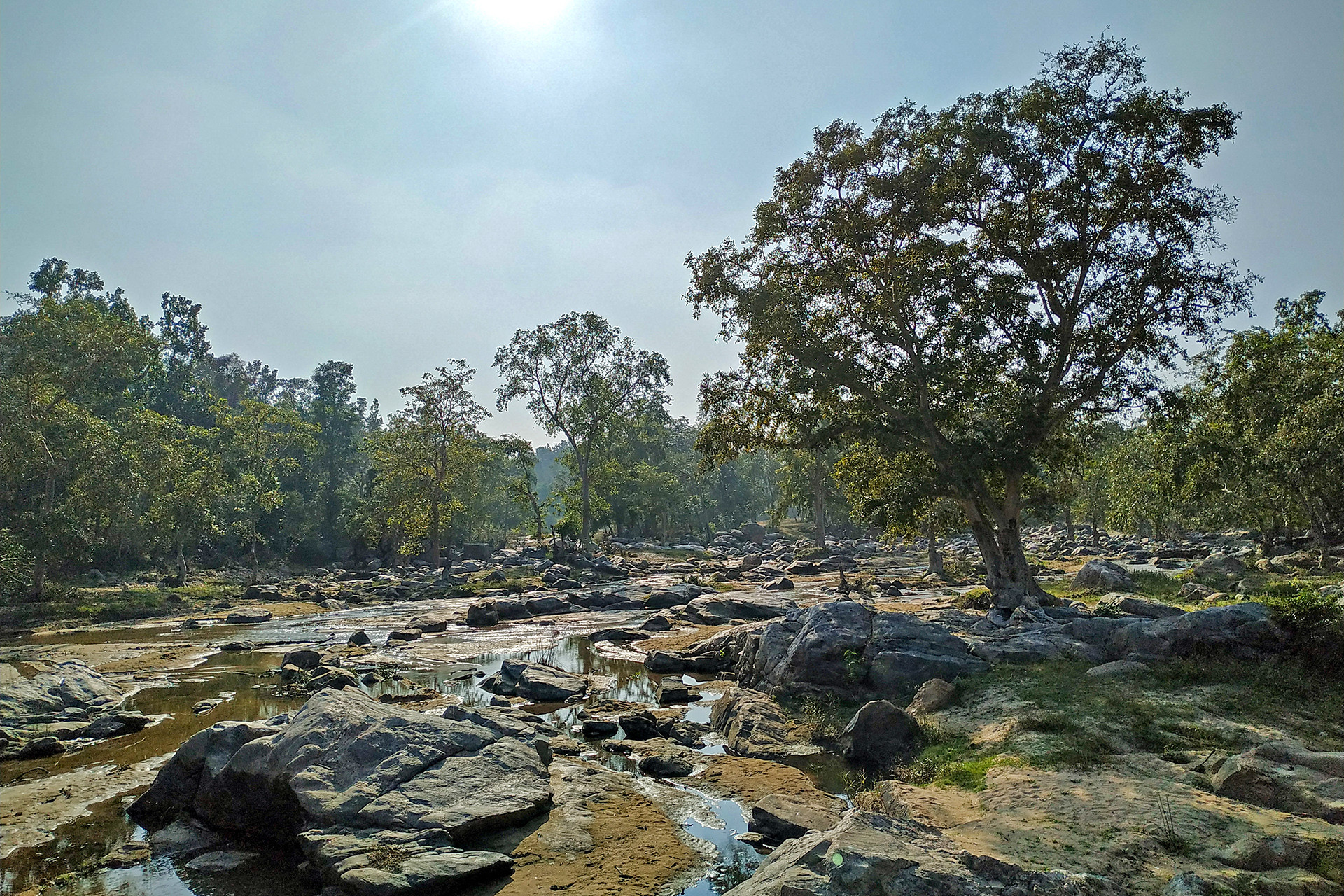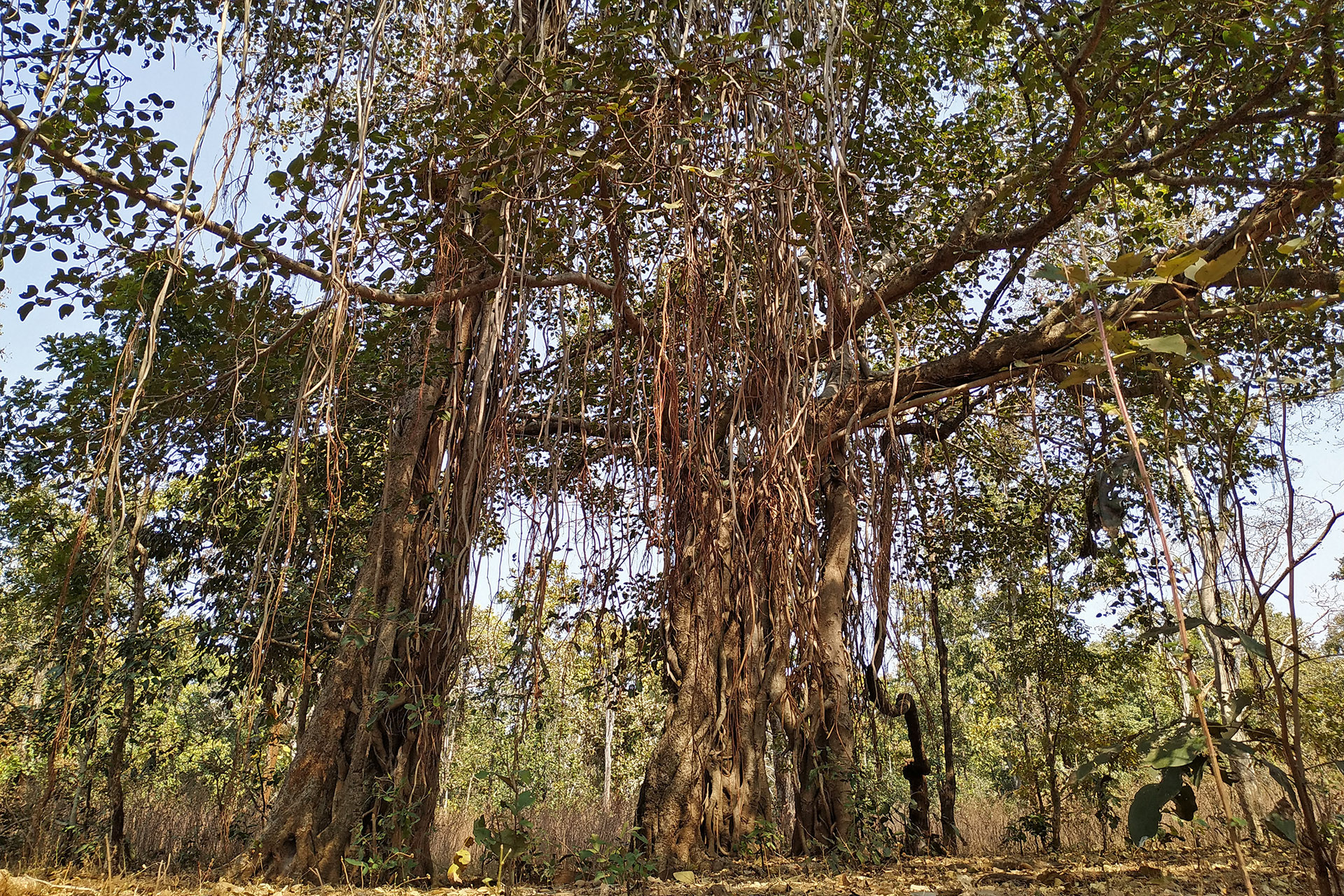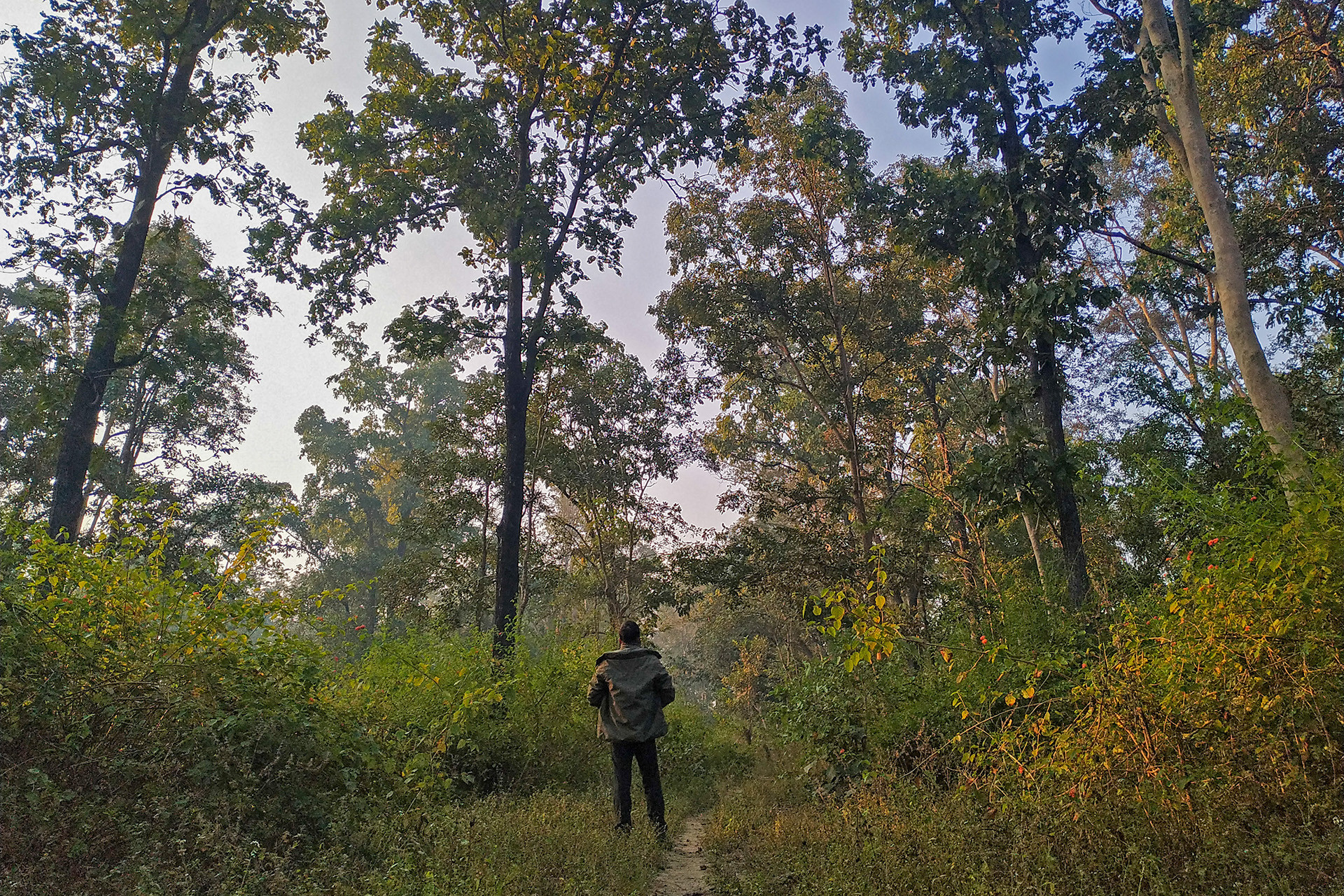Studying the auditory dimension of a forest is a data-intensive, scientific undertaking, but it is also an absolute pleasure to eavesdrop on a host of melodious and some not-so melodious vocalising species. Just like one does with a camera trap, we leave out acoustic recorders in the forest to record all frequencies between 0 to 24000 Hz, which include vocalising species audible and inaudible to humans. When we retrieve our acoustic recorders, we're always excited to hear what awaits us in these recorded soundscapes. From finding oneself smack in the middle of a drama unfolding in the form of a possible tiger or leopard hunt to experiencing the Common Hawk-Cuckoo season in full swing, these acoustic delights remain hidden in gobs of data and jump out at us as we carefully analyse the data.
This series of soundscape stories come from the two extreme seasons in central India – summer and winter. While each season boasts its host of migratory species, it is also the resident species that light up the spectrograms and put on a spectacular auditory show. Central India is home to one of the largest populations of big cats, but it also hosts a much larger biological diversity, which often remains in the shadows of the tigers’ popularity. However, in the auditory landscape, it is these lesser charismatic species like the anurans, insects and birds that take the limelight. The region also boasts several forest-fringe villages where people and wildlife have both adjusted to make space for each other. Listening to these forests – classic socio-ecological systems – reminds us of how unique rural Indian landscapes are.
We invite you to listen to these soundscape stories and appreciate the captivating auditory dimension of a tropical dry forest in the heart of India.
In central India, as the summer heat peaks and temperatures touch 45-46°C, thunderstorms are a welcome break. Here is a clip of a storm settling in on a hot and humid morning in the buffer forest of Kanha National Park. The rumble of the thunder brings an end to the noisy cackles, shrill chirps and low-pitched calls, as everyone looks for cover from the approaching storm.
Acoustic data is like a peephole into life in the forest, allowing us to experience exciting everyday happenings. Here is a clip of a morning when the langurs and Sambar Deer were less than comfortable on the account of a big cat in the vicinity. Loud alarm calls resonate in the tropical dry forest, and in this case, probably ruined the chances of the predator. Nonetheless, experiencing this drama acoustically is transporting.
The famous entertainer of the forest, the Greater Racket-tailed Drongo (Dicrurus paradiseus), can keep birders and wildlife enthusiasts enthralled with its varied songs and impressive mimicking abilities. On a bright and chilly morning in January, we chanced upon this drongo dominating the soundscape of the buffer forest near a village. Greater Racket-tailed Drongos utilise their mimicking capabilities to gain territorial advantage and to make ‘contact calls’ to birds of mixed-species flocks with whom they often team up to hunt insects.
Several national parks and tiger reserves in India are found in human-dominated landscapes. While the core areas of national parks are strictly protected, buffer regions often include fragmented forests and small hamlets and villages. People use the forest for their livelihoods and for cultural reasons, and in the same way, wildlife, especially ungulates, come close to villages and often feast on crops being grown by the villagers. In India, people are very much a part of the wild landscape. Here is a soundscape of a buffer village waking up and going about their day.
The Common Hawk-Cuckoo, which is silent through most of the year, becomes extremely active as winter comes to an end and paves the arrival of summer. According to folklore, the Common Hawk-Cuckoo is considered a messenger of the monsoon, notifying farmers to start ploughing their fields and sowing their seeds. Based on anecdotal evidence, birders and locals alike have noticed a shift in the temporal pattern in the vocalisations of the Common Hawk-Cuckoo. While this particular audio clip is from February 2020, the Common Hawk-Cuckoo has recently been heard as early as December. Cloudy days and unusually wet winters may be the reason why these cuckoos have been heard even through the peak of winter.
Here is another acoustic gem from the winter season, of a Greater Racket-tailed Drongo mimicking a Common Hawk-Cuckoo. Recorded in January, earlier this year, it is clear that the Common Hawk-Cuckoo has been the flavour of the winter season.
Commonly found across India, the Brown-headed Barbet is a joy to encounter in the forest, especially when they are in the mood to communicate from their respective perches on trees around the passive acoustic monitoring unit. Here is a wonderful morning when Brown-headed Barbets were exceptionally vocal and their unique vocalisation reverberated through the forest.
Indian Grey Hornbills are a common sight in the buffer villages of Kanha National Park. They feast on the many fig trees that grow big and wide in and around the forest-fringe villages. In the few quiet moments of a late winter morning, these Indian Grey Hornbills managed to brighten up our spectrogram with their loud shrieks that are so familiar to all of us, rural and city folk alike.
Summers in the central Indian highlands are merciless, with little respite in the wee hours of the morning. In these early hours, the auditory spectrum of the forest lights up for a few brief moments only to go completely silent as the dawn leads into yet another hot summer day. These brief moments of respite present to us some of the most stunning dawn choruses as several bird species look to mate up for the season and insects relish the high temperatures. This clip also captures the song of the Indian Cuckoo, a brood parasite, which lays its eggs in the nests of other birds such as the drongos.
While it is challenging to tell which woodpecker is drumming away here, it is still a joy to chance upon this clip. Our guess is the commonly found White-naped Woodpecker or the Black-rumped Flameback.
In the early hours of dawn, on a late winter morning, this pair of Jungle Owlets had much to communicate. In the background, one can hear the ever-present Common Hawk-Cuckoo joining in the duet of the owlets.
The alarm call of a Nilgai or the Blue Bull (Boselaphus tragocamelus) sounds like an admixture of the sound of a bull and the alarm call of a Sambar Deer. If you listen closely, through the chatter and songs of the birds, you will hear the faint alarm call of the Nilgai, indicative of the drama that unfolds every day at dawn and dusk as the large cats come out to hunt.
Dynamic Spectrogram code credit: Araya-Salas M & M. Wilkins. (2020), dynaSpec: dynamic spectrogram visualizations in R. R package version 1.0.0.






